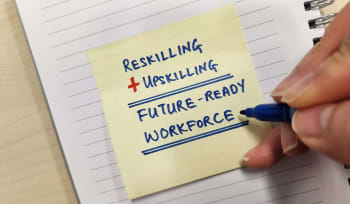This informal CPD article on Physical Literacy was provided by Teddy Time Fitness, a company whose aim is to provide a range of products and services that assist nurseries, childminders and schools deliver effective physical play activities for children in early years.
Understand how to plan an inclusive physical play activity for children aged 2 – 5
When planning an inclusive physical play activity session for children aged 2 – 5 you need to consider who will be taking part in the activity. Information such as numbers, ages, abilities, language, and developmental stages of the children, will allow you to plan an inclusive session.
Understanding the stages of development of children in relation to physical activity is also very important in creating sessions that match not just the physical stages of development, but also the social and emotional development stages of children attending. One important element to this is something known as physical literacy. Physical literacy is the motivation, confidence, physical competence, knowledge, and understanding to value and take responsibility for engagement in physical activities for life. There are 4 main elements to this:
- 1. Motivation and Confidence (Affective)
- 2. Physical Competence (Physical)
- 3. Knowledge and Understanding (Cognitive)
- 4. Engagement in Physical Activities for Life (Behavioural)
In this article we will consider one of the physical competence components of physical literacy: Core strength building. This plays a surprisingly fundamental role in establishing the skills needed for classroom performance. A child needs a strong core to enable them to develop their physical, functional and social foundations to maintain an upright posture whilst standing and sitting. Essentially, core strength, or postural control, is both the anchor and the launching pad for everything that we do.
Core strength development starts very early on, as an infant. Therefore “tummy time”, for example is so important. When an infant has daily opportunities to lie on the tummy, they begin to learn to lift their head, developing the upper body strength that helps to strengthen the neck and upper back muscles. This will help the infant to begin supporting the weight of their own head and to be able to look around in response to sounds. It will also prepare the infant for such developmental milestones such as crawling, rolling over, and sitting up independently.
Activities that help with the development of core skills are:
- Rolling: Use your imagination: You can roll under parachutes, over bubble wrap, with a partner. There are many ways to use rolling to develop vestibular, spatial, proprioceptive and general motor skills.
- Superman
- Commando crawling, Crawling: Slowly, quickly, crawl through tunnels, under parachutes.
- Play animal walks by pretending to be a variety of animals such as crabs, frogs, bears, worms or kangaroos! All of these use the child’s body weight as resistance.
Set up a mini ‘core strength circuit’, and have your child complete:
- Plank positions: Four point kneel, where your child assumes a crawling position on hands and knees. Have them extend opposite arm and leg for 5 sec each – try to increase the time held each set! Elbow plank, where your child uses their elbows/forearms and toes for support.
These activities play a fundamental role in establishing firm foundations for the skills needed for classroom performance. It is important that we do not underestimate the significance of these motor activities as they help young children to develop visual and spatial development skills as well as their gross motor skills.
We hope this article was helpful. For more information from Teddy Time, please visit their CPD Member Directory page. Alternatively please visit the CPD Industry Hubs for more CPD articles, courses and events relevant to your Continuing Professional Development requirements.













